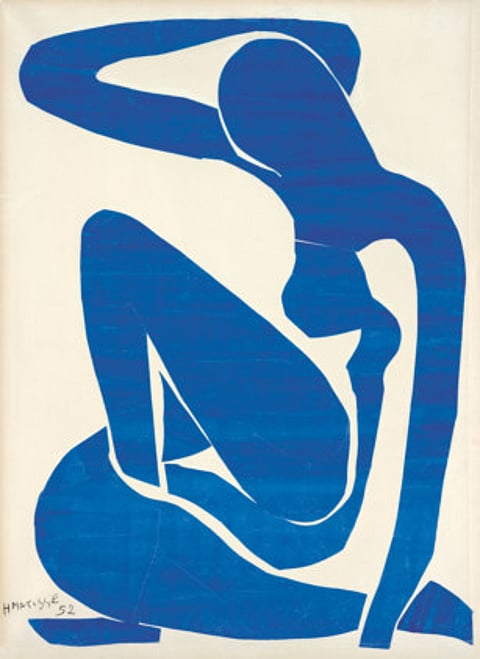The great late flowering of Henri Matisse
‘Henri Matisse: The Cut-outs’, on show at the Tate Modern, London, is a ‘once-in-a-lifetime’ exhibition, says the co-curator

I have vivid memories of the Matisse retrospective show that opened the Hayward Gallery in 1968. I had mostly seen only reproductions of the great paintings and cut-outs, and it was astonishing, to discover what a brilliant colourist and draughtsman he was. I went to the Vence chapel in Provence in the mid-1970s and was similarly bowled over, as everyone is.
Shortly afterwards I saw the catalogue for an American show of the cut-outs that made me want to do a cut-out show one day. Sometimes these ideas can sit at the back of your mind for a surprisingly long time and now, nearly 40 years later, we are doing it.
Colour was always fundamental to Matisse, but the originality of taking these sheets of coloured paper, using an almost childlike process of juxtaposition of flat surfaces to create schematic images, was really unprecedented in art.
But while the cut-outs are the great late flowering of his work, it did take quite a while for them to be appreciated. They were shown in the Salon de Paris in the early 1950s and were largely dismissed as the wanderings of an old man. The first significant show, of a very limited number of pieces, was at the Museum of Modern Art in New York in 1961, seven years after his death.
The Tate bought “The Snail” in 1962, which at the time was a very bold move because there would have been plenty of people arguing that they should use the money to buy a classic painting from the 1930s. “The Snail” has been a cornerstone for the Tate ever since, but, in general, we didn’t buy often enough or early enough. Normally, if you want to see Matisse you have to go to Paris or New York, but this show is by far the most extensive and important exhibition of the cut-outs since his death.
All the important works [on show] reveal the evolution of his ambition. He started using the cut-outs as a way of making books and illustrations, and then they became independent works in their own right. He saw a potential in them that no one else had ever seen. And because he was by this time infirm, it gave him an opportunity to work on a much grander scale than he could as a painter. Suddenly they begin to occupy a wall and become almost environmental in scale.
It was through this work that Matisse realised his only great architectural, quasi-public and, in this case, religious commission: the chapel in Vence. He had always wanted to do a big decorative scheme, as is the tradition of painters in France, and he used the cut-out as the means by which to achieve his ambition. It has to be one of the great works made anywhere at any time. The Sistine ceiling or the Vence chapel? I wouldn’t want to choose between them.
It is not by chance that there hasn’t been a substantial cut-outs show for nearly 40 years. Our initial task as curators was persuading the owners of these relatively fragile works to allow them to travel and to part with them for many months. Technological progress has made the process of moving works of art round the world very much more secure than it once was, but you ultimately persuade people to lend by convincing them that the show itself is going to be sufficiently well done, and that by bringing these works together we will gain an understanding of Matisse’s methods, and an appreciation of the beauty of the works themselves, that you simply couldn’t get by going from museum to museum.
And that is what you will get. Matisse was working ahead of his time for most of his career and these late cut-outs established a new language that artists have been working hard to digest ever since. They come close to work that might be made by a child in their sense of freshness and freedom, yet they are also very, very carefully composed and are works of art based on enormous restraint and experience of how colours fit together. A curator doesn’t often say “once in a lifetime”, but I don’t think we will ever again be able to assemble a cut-outs show with such quantity and quality.
–Guardian News & Media Ltd
Nicholas Serota is director of the Tate art museums and co-curator of the exhibition.
Sign up for the Daily Briefing
Get the latest news and updates straight to your inbox



